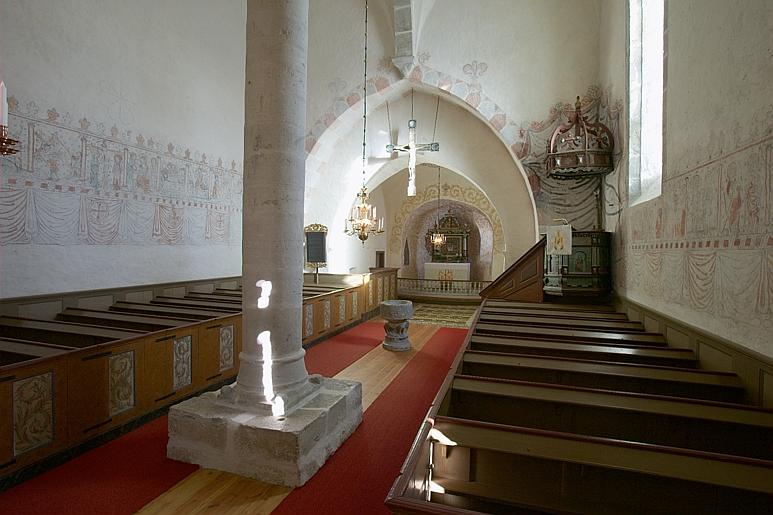Gerum Church on:
[Wikipedia]
[Google]
[Amazon]
Gerum Church ( sv, Gerum kyrka) is a medieval church in Gerum on the Swedish island of Gotland, built between c. 1200 and 1300. It is used by the
 The oldest parts of Gerum Church are the
The oldest parts of Gerum Church are the
Church of Sweden
The Church of Sweden ( sv, Svenska kyrkan) is an Evangelical Lutheran national church in Sweden. A former state church, headquartered in Uppsala, with around 5.6 million members at year end 2021, it is the largest Christian denomination in Sw ...
.
History and architecture
 The oldest parts of Gerum Church are the
The oldest parts of Gerum Church are the choir
A choir ( ; also known as a chorale or chorus) is a musical ensemble of singers. Choral music, in turn, is the music written specifically for such an ensemble to perform. Choirs may perform music from the classical music repertoire, which sp ...
and apse
In architecture, an apse (plural apses; from Latin 'arch, vault' from Ancient Greek 'arch'; sometimes written apsis, plural apsides) is a semicircular recess covered with a hemispherical vault or semi-dome, also known as an '' exedra''. ...
, dating from circa 1200 and Romanesque in style. The presently visible, Gothic
Gothic or Gothics may refer to:
People and languages
*Goths or Gothic people, the ethnonym of a group of East Germanic tribes
**Gothic language, an extinct East Germanic language spoken by the Goths
**Crimean Gothic, the Gothic language spoken b ...
nave
The nave () is the central part of a church, stretching from the (normally western) main entrance or rear wall, to the transepts, or in a church without transepts, to the chancel. When a church contains side aisles, as in a basilica-type ...
dates from a later time of the 13th century and probably replaced an earlier, Romanesque nave. The tower, which was never finished, was built circa 1300. The only non-medieval part of the church is the sacristy, built in 1835.
Gerum Church is constructed of limestone
Limestone ( calcium carbonate ) is a type of carbonate sedimentary rock which is the main source of the material lime. It is composed mostly of the minerals calcite and aragonite, which are different crystal forms of . Limestone forms whe ...
. The exterior is whitewashed apart from several finely carved stone details. The façade is broken by four windows on the southern side while the northern completely lacks windows. The church has three portals, one Romanesque in the choir and two Gothic in the nave and tower, respectively. The Gothic portals are decorated with stone sculptures.
Inside, the church has murals from at least three different periods: the 13th century, the 15th century by the Master of the Passion of Christ (''Passionsmästaren'') and the 18th century. The church also has a decorated stained glass window from the 14th century. The baptismal font of sandstone from the latter part of the 12th century is a work by a Gotlandic sculptor known today by the notname
In art history, a ''Notname'' (, "necessity-name" or "contingency-name") is an invented name given to an artist whose identity has been lost. The practice arose from the need to give such artists and their typically untitled, or generically title ...
Majestatis.
It belongs to the Diocese of Visby
The Diocese of Visby ( sv, Visby stift) is a division of the Church of Sweden consisting of the island of Gotland. Its seat is Visby Cathedral located in the largest town on Gotland, Visby.
The Bishop of Visby is also responsible for the episc ...
.
References
Further reading
*External links
* {{Churches on Gotland 14th-century churches in Sweden Romanesque architecture in Sweden Gothic architecture in Sweden Churches in Gotland County Churches in the Diocese of Visby Church frescos in Sweden Churches converted from the Roman Catholic Church to the Church of Sweden